 |
Images for Alternative Unknowns
organized by Elliott P. Montgomery and Chris Woebken
on view November 5 - December 19, 2015, in NYC
back to exhibition page
|
| INSTALLATION IMAGES |
|
|
|
|
| |
|
|
|
|
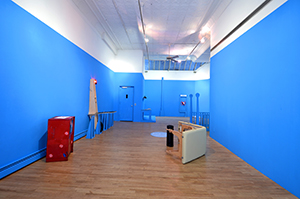 |
|
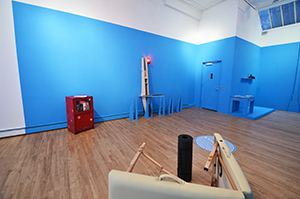 |
|
 |
| Installation view of Alternative Unknowns on view at apexart-nyc Nov 5 - Dec 19, 2015 |
|
Installation view of Alternative Unknowns on view at apexart-nyc Nov 5 - Dec 19, 2015 |
|
Matt Jones, with Matt Delbridge and Isaac Blankensmith, Citibikefrastructure, 2015 |
| |
|
|
|
|
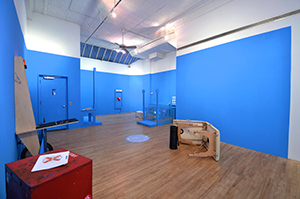 |
|
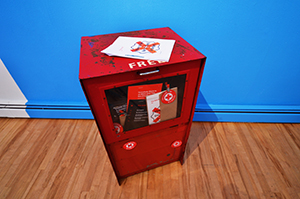 |
|
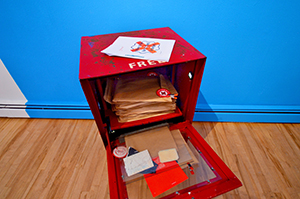 |
| Installation view of Alternative Unknowns on view at apexart-nyc Nov 5 - Dec 19, 2015 |
|
Lost Cause, Inc., The Red X, 2011, Paper, ink, staples |
|
Lost Cause, Inc., The Red X, 2011, Paper, ink, staples |
| |
|
|
|
|
 |
|
 |
|
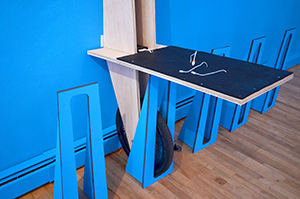 |
| Installation view of Alternative Unknowns on view at apexart-nyc Nov 5 - Dec 19, 2015 |
|
Installation view of Alternative Unknowns on view at apexart-nyc Nov 5 - Dec 19, 2015 |
|
Matt Jones, Matt Delridge, and Isaac Blankensmith, Citibikefrastructure, 2015 |
| |
|
|
|
|
 |
|
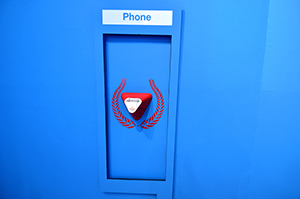 |
|
 |
Clay Kippen, Discreet Diagnostic Device, 2015 and
Sam Hart, Fog of War, 2015 |
|
Fabien Caperan, L-Hero, 2015 |
|
Fabien Caperan, L-Hero, 2015 |
| |
|
|
|
|
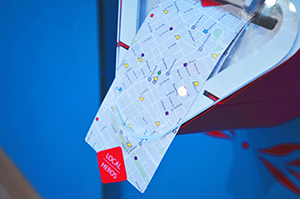 |
|
 |
|
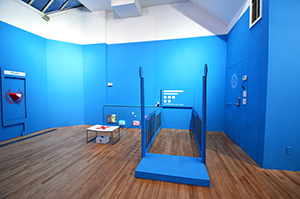 |
| Fabien Caperan, L-Hero, 2015 |
|
Installation view of Alternative Unknowns on view at apexart-nyc Nov 5 - Dec 19, 2015 |
|
Dr. Natalie Jeremijenko, with Fernando Cremades and Niels Bak, AN XRAT COLLABORATORY, 2015 |
| |
|
|
|
|
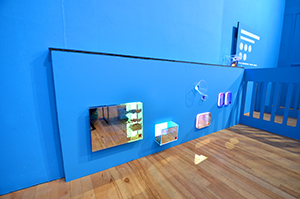 |
|
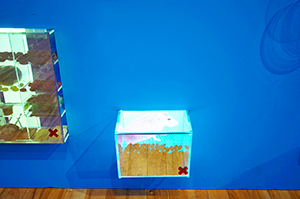 |
|
 |
| Dr. Natalie Jeremijenko, with Fernando Cremades and Niels Bak, AN XRAT COLLABORATORY, 2015 |
|
Dr. Natalie Jeremijenko, with Fernando Cremades and Niels Bak, AN XRAT COLLABORATORY, 2015 |
|
Dr. Natalie Jeremijenko, with Fernando Cremades and Niels Bak, AN XRAT COLLABORATORY, 2015 |
| |
|
|
|
|
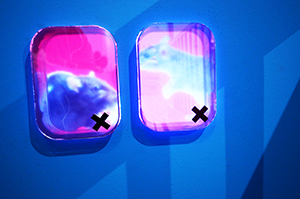 |
|
 |
|
 |
| Dr. Natalie Jeremijenko, with Fernando Cremades and Niels Bak, AN XRAT COLLABORATORY, 2015 |
|
Dr. Natalie Jeremijenko, with Fernando Cremades and Niels Bak, AN XRAT COLLABORATORY, 2015 |
|
Dr. Natalie Jeremijenko, with Fernando Cremades and Niels Bak, AN XRAT COLLABORATORY, 2015 |
| |
|
|
|
|
 |
|
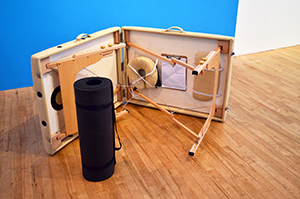 |
|
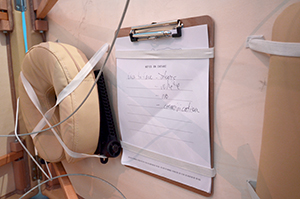 |
| Installation view of Alternative Unknowns on view at apexart-nyc Nov 5 - Dec 19, 2015 |
|
Miriam Simun and Nanu Al-Hamad, Emergency Intake, 2015 |
|
Miriam Simun and Nanu Al-Hamad, Emergency Intake, 2015 |
| |
|
|
|
|
| |
|
|
|
|
| PERFORMANCE STILLS |
|
|
|
|
| |
|
|
|
|
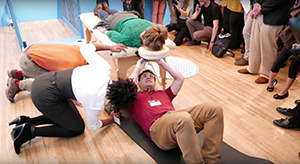 |
|
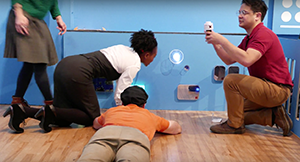 |
|
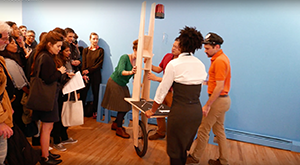 |
| |
|
|
|
|
| |
|
|
|
|
| BROCHURE IMAGES |
|
|
|
|
| |
|
|
|
|
 |
|
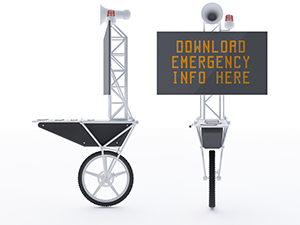 |
|
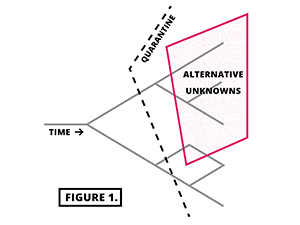 |
| Matt Jones, Matt Delridge, and Isaac Blankensmith, Citibikefrastructure, 2015 |
|
Matt Jones, Matt Delridge, and Isaac Blankensmith, Citibikefrastructure, 2015 |
|
Sam Hart, Fog of War, 2015, Four-fold booklet, 2.75 x 5.75 in |
| |
|
|
|
|
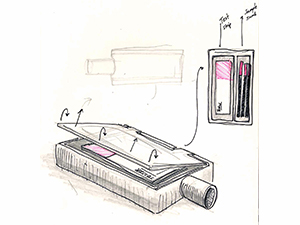 |
|
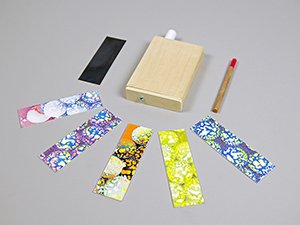 |
|
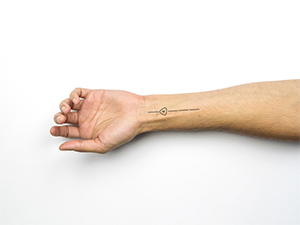 |
| Clay Kippen, Discreet Diagnostic Device, 2015, Wood, acrylic, glue, museum Board, acrylic ink on paper, 18 x 14 x 1 in |
|
Clay Kippen, Discreet Diagnostic Device, 2015, Wood, acrylic, glue, museum Board, acrylic ink on paper, 18 x 14 x 1 in |
|
Matt Jones, Matt Delridge, and Isaac Blankensmith, Bodyclocks, 2015 |
| |
|
|
|
|
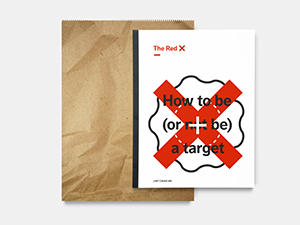 |
|
 |
|
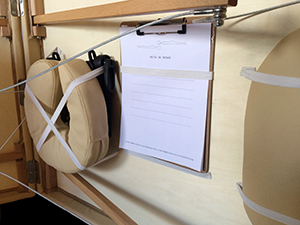 |
Lost Cause Inc, The Red X, 2011, Paper, Ink, and Staples, 8.5 x 11 in
The purpose of an infection checkpoint is to identify individuals who could pose a threat to public health. But it’s also an easy way to target people who are perceived as a threat for other reasons. “The Red X: How to be (or not be) a target,” is a field guide for managing the additional scrutiny of law enforcement during a pandemic. |
|
Fabien Caperan, L-Hero, 2015
L-Hero will dispense tickets to help you quickly find the person you need in case of emergency, or "Local Hero." The object plays with the codes of super-heroes to create a positive message to the audience. |
|
Miriam Simun and Nanu Al-Hamad, Emergency Intake, 2015, Massage table, floor mat, clipboard, intake sheet, space pen,136 x 28 x 33 in
Emergency Intake attends to the interpersonal, psychological, and emotio-physiological needs of those undergoing an emergency. The intake personnel, a licensed critical stress management clinician, lies down on the ground level of the Emergency Intake system, ready and equipped to listen and process, while the individual being ‘processed' gets on top and gets comfortable. The Emergency Intake Processing System design thus nudges users to abandon distraction and prepare for emotional rescue. |
| |
|
|
|
|
| EXHIBITION RESOURCES |
|
|
|
|
| |
|
|
|
|
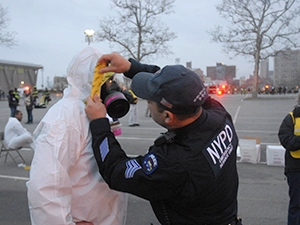 |
|
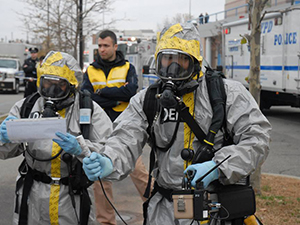 |
|
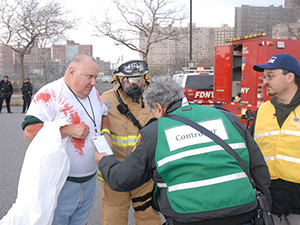 |
Radiological Dispersal Device (RDD) in Coney Island 2013 - NYC OEM
"Victims" were given cards with their simulated exposure levels, and agencies used these cards to ascertain the levels of radiation these "victims" received. Based on his/her triage tag and exposure level, each "victim" received simulated medical follow-up and/or decontamination, according to standard operating procedures. |
| |
|
|
|
|
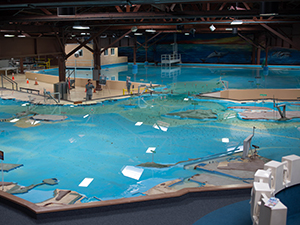 |
|
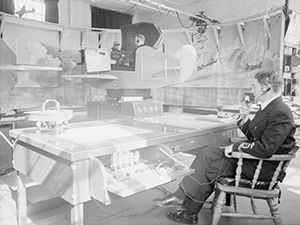 |
|
|
U.S. Army Corps of Engineers Bay Model in Sausalito - The Extrapolation Factory
Another inspiring simulator is the San Francisco Bay Model, constructed by the U.S. Army Corps of Engineers in 1956. The model was originally built to test a major engineering plan to build dams throughout the bay. The simulator served as a decision making tool, rendering the plan as a non-viable proposal, and helping to save the bay. |
|
Link trainer in use at a British Fleet Air Arm station in 1943 - Royal Navy official photographer, Zimmerman, E A (Lt)
As early as the 1930s, flight simulation instruments were developed for training and evaluation. The Link Trainer, a flight simulator produced in 1929, was developed as a tool for teaching pilots how to fly using the most current instruments. The Link flight simulator responded to the pilot's controls and gave an accurate reading on the included instruments. |
|
|
| |
|
|
|
|
|
|





